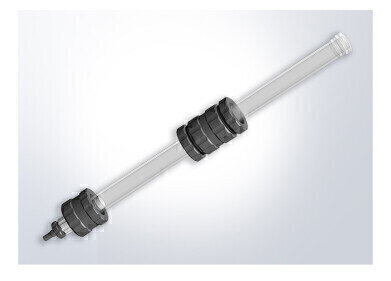Preparative
Analysing Harmful Chemicals from E-Cigarettes
Jul 26 2017
Reports have found that e-cigarettes release compounds that are toxic, and now a study from the Lawrence Berkeley National Laboratory has looked at the source and formation of the emissions and has shown how temperature, shape, and age of the e-cigarette influence the emissions. The data is important to the manufacturers and regulators looking to minimize the impacts of e-cigarettes on health.
The study was published in Environmental Science and Technology and found that the decomposition of propylene glycol and glycerine - due to the temperature of e-cigarettes - allows the emission of a poisonous blend of substances, including acrolein and formaldehyde. Since propylene glycol and glycerine are found in most e-fluids - the liquid vaporized in e-cigarettes - these toxic compounds are likely to be emitted from most vaporizers.
Is that machine smoking?
In the study the researchers recreated vaping using three different e-fluids in two vaporizers and used different battery settings. The two e-cigarettes were different, one low priced vaporizer with a single heating coil, the other more expensive with two heating coils.
Gas and liquid chromatography was used to analyse the vapour produced in the e-cigarettes and to examine what was in the vapour. They looking at the initial puffs and the later puffs after the e-cigarette had warmed up and achieved a constant state. They also looked at the effects of using an aged e-cigarette. The use of GC to analyse vapours is discussed in the article, Sample Preparation Options for Aroma Analysis.
A major finding was that the initial and steady state puffs were very different. Using a jig configured to copy a user drawing on an e-cigarette, the team drew on the e-cigarette taking puffs of 5 seconds each every 30 seconds. They found that the vapour temperature climbed quickly inside the initial 5 to 10 minutes until accomplishing a standard state temperature after about 20 puffs.
The difference in concentration of compounds between the initial and steady state puffs was a factor of 10 different in some instances — depending on the vaporizer used, the battery voltage, and the compound measured. For acrolein - an eye and respiratory irritant - a solitary loop e-cigarette working at 3.8 volts transmitted 0.46 micrograms for each puff in the initial 5 puffs, however at the steady state it emitted 8.7 micrograms for every puff. By comparison, regular cigarettes emit 400 to 650 micrograms of acrolein for every cigarette. The likely total for an e-cigarette - puffed for 20 puffs - is in the range 90 to 100 micrograms.
Keep your vaporizer clean
The team also looked at the effect of aging of an e-cigarette on its emissions. They used a single device for nine sequential 50-puff cycles without purifying. They found that emissions of formaldehyde, acetaldehyde, and acrolein - all either cancer agents or respiratory irritants - increased with age. This could be associated with the build-up of deposits on the heating coil.
In a news release from Berkeley Lab, Hugo Destaillats the paper’s lead author stated that ‘Regular cigarettes are super unhealthy. E-cigarettes are just unhealthy.’
Update - 05/10/2016 - Comment from Mr C Wright - Technical Manager at TraceContaminants BAT Group R&D
Most of the carbonyl compounds (formaldehyde, acetaldehyde, glycidol, acrolein, acetol) discussed by the LBNL group have been previously associated with thermal degradation of glycerol and propylene glycol.
To our knowledge diacetyl is an avoidable ingredient or contaminant of flavours.
Whilst not all e-cigarette devices and liquids are manufactured and tested to rigorous standards, studies of e-cigarettes in our portfolio show that, when used in accordance with manufacturer directions, the levels of carbonyl substances emitted in the aerosol are generally low. For example a recent comparison between cigarette smoke and e-cigarette emissions addresses these and many more substances [McAdam et al, Chemical Research in Toxicology DOI: 10.1021/acs.chemrestox.6b00188 ].
The upper voltage (4.8V) applied to the products in the LBNL study was very high. Specialists in this field such as Konstantinos Farsalinos have previously commented nejm.org that such conditions are not used by consumers because they create a very unpleasant taste.
All of BAT’s presented and published research, including studies on e-cigarettes and carbonyl compounds, can be found in the library section of bat-science.com
Events
Mar 18 2025 Beijing, China
Mar 25 2025 Paris, France
Mar 31 2025 Beijing, China
Apr 02 2025 Saigon, Vietnam
Apr 22 2025 Kintex, South Korea














